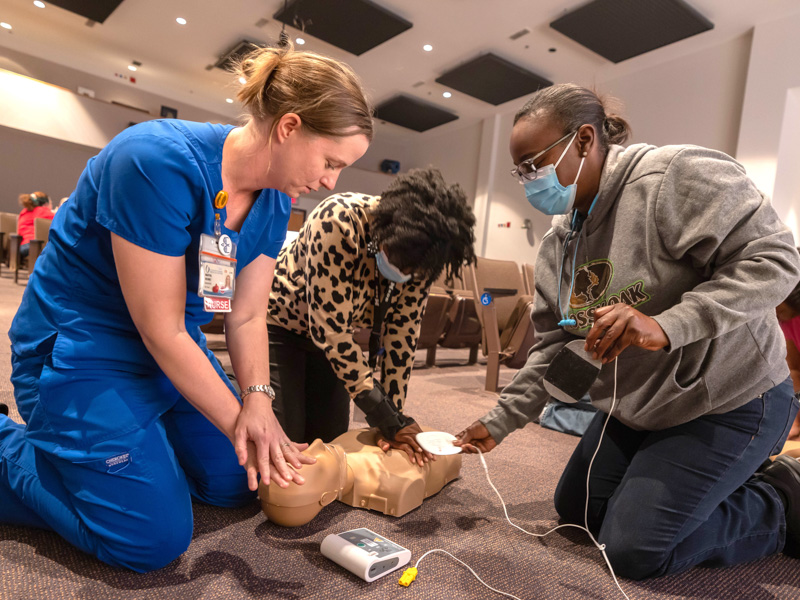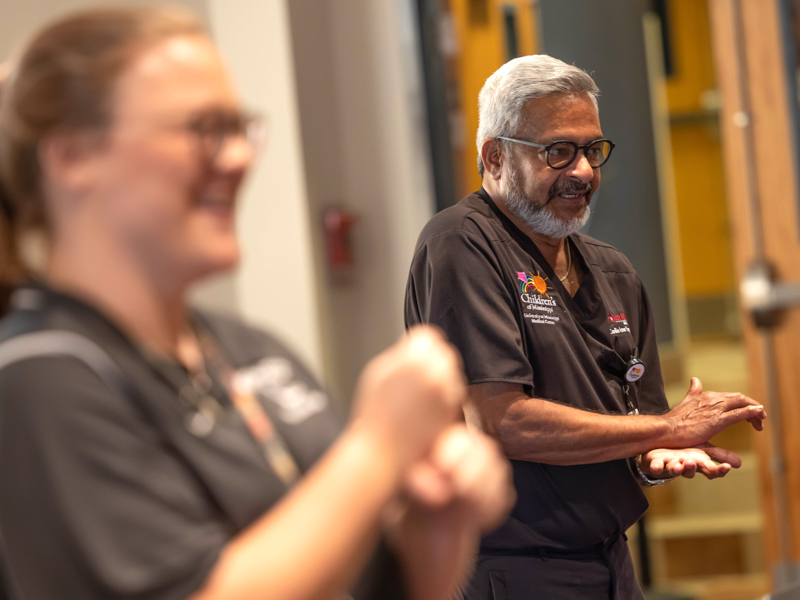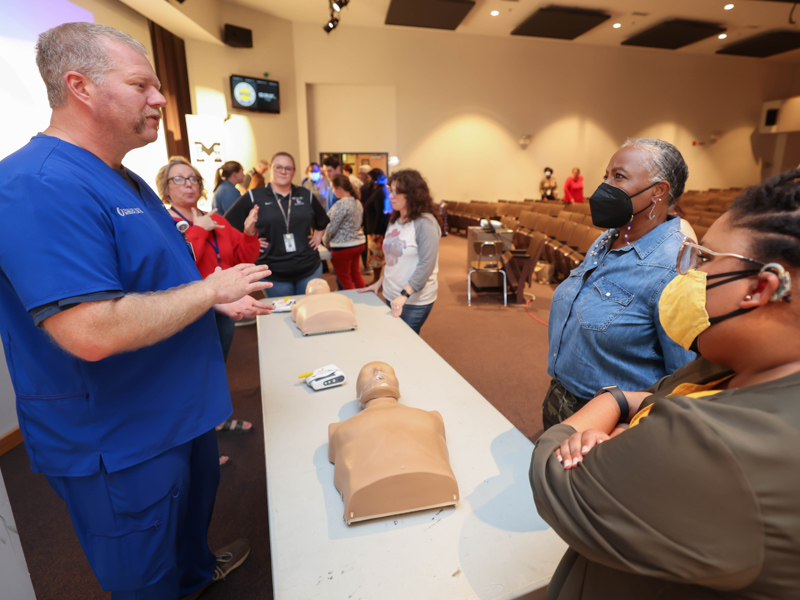Project ADAM provides Mississippi Schools for the Deaf and Blind with lifesaving training

When cardiac arrest occurs, every second counts.
That’s why the team from Project ADAM, a national program offered in Mississippi by the Children’s Heart Center at Children’s of Mississippi, trained faculty and staff at the Mississippi Schools for the Deaf and Blind in hands-only CPR and using defibrillators.
The campus is the first in the state to join Project ADAM, and Dr. Charles Gaymes, professor of pediatric cardiology at the University of Mississippi Medical Center, a cardiologist with the Children’s Heart Center and Project ADAM’s medical director, hopes schools around the state will follow their lead.

“In case someone suffers cardiac arrest, we want the faculty and staff to be prepared and skilled enough to perform CPR and use an AED until emergency responders arrive,” Gaymes said. “It is not complex, and the AEDs are all automatic.”
The schools have three automatic external defibrillators, or AEDs, with an additional 14 ordered.
“We hope we never have to put this training to work,” said superintendent Dr. Jeremy Stinson, “but we’re ready in case we do.”
Any CPR, said Gaymes, is better than no CPR. “What we don’t want is a student, parent, teacher or worker having cardiac arrest and no CPR occurring. The worst thing you can do in that situation is freeze. To save a life, you have to act.”
Teachers, administrators and staff members watched an instructional video featuring Project ADAM Mississippi coordinator Laura Kelly and Virginia Cowan, Project ADAM Mississippi educator. Hands-on CPR and AED training followed, with class members kneeling beside manikins to practice chest compressions and using an AED to restore heartbeat.
The scenario practiced Nov. 11 started with the discovery of a person who passed out and isn’t breathing. After efforts to awaken the person, the next step is calling for help, telling others to call 911 and get the AED.

“It may be eight to 10 minutes before an ambulance can reach you, so you will need to start CPR,” said Jereme King, director of the Life Support Training Center at UMMC.
Hands-only CPR involves rhythmic chest compressions of about 100 to 120 a minute, roughly the tempo of the Bee Gees’ hit “Stayin’ Alive.”
Once the AED arrives, automated instructions will tell rescuers what to do, from placing leads on the person’s chest to pressing a button to administer a shock to restart the heart.
“When someone is in cardiac arrest, there is no meaningful electrical stimulation of the heart telling it to beat,” Gaymes said. “We use an AED to restore the electrical rhythm of the heart.”
Chest compressions should continue after AED use unless the person has resumed breathing.
Haley Colón, secondary English teacher, said she’s glad to be prepared in case of emergency. “After this training, I feel ready, more so than before.”
Started in 1999 after a series of deaths by ventricular fibrillation among high school athletes in Wisconsin and Georgia, Project ADAM seeks to save lives by coordinating CPR and AED training efforts in schools.
UMMC's goal in becoming an affiliate of Project ADAM is to create Heart Safe schools in Mississippi to reduce the risk of sudden death among students, teachers, staff members, family and visitors. Project ADAM serves Mississippi schools through CPR training, raising awareness, and monitoring equipment, Kelly said.
Schools interested in learning more should contact the Project ADAM team at the University of Mississippi Medical Center online.
Other groups, ranging from businesses to churches and more, can contact the Basic and Advanced Resuscitation Training Center at UMMC for more information at (601) 984-5591 or by emailing rtc@umc.edu.


